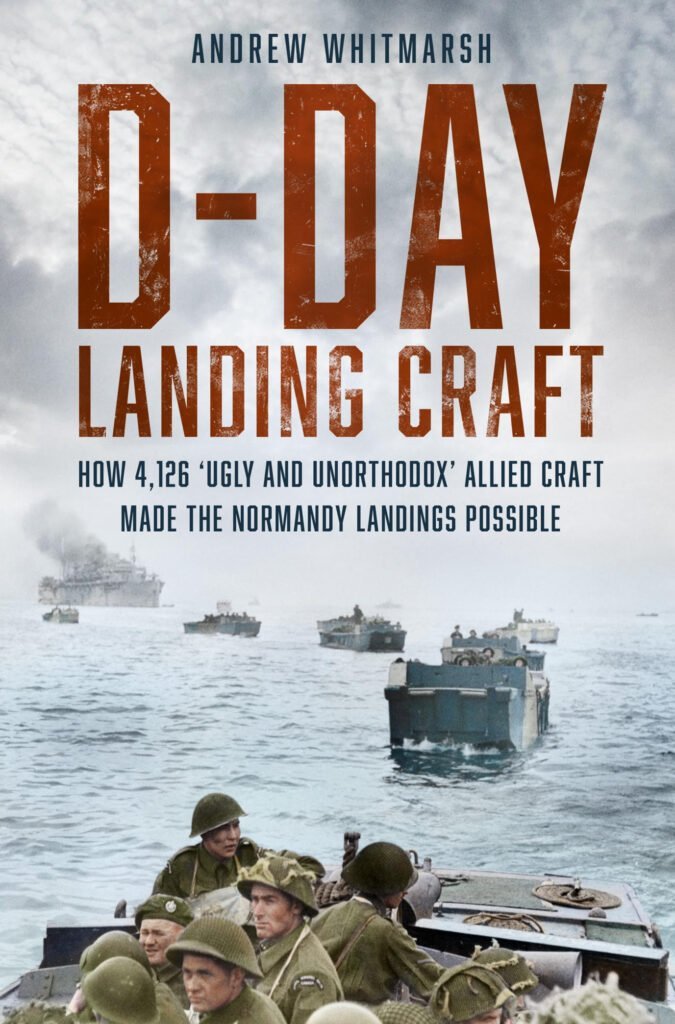Find out about upcoming talks and podcast appearances! Or see below to watch some of my past appearances.

A new book on how British, American and Canadian-crewed craft made the Normandy Landings possible. Published in the UK in May 2024, and now available in the USA also.
“…one of the best books about D-Day to appear in recent years: it deserves to be very widely read.”
Dr Simon Trew (former head of the Department of War Studies, The Royal Military Academy Sandhurst)
“…an excellent account of the amphibious fleet regarding the D-Day landings… a must for anyone interested in this subject.”
John M Curatola LtCol USMC (Ret), PhD, Samuel Zemurray Stone Senior Historian, National World War II Museum, New Orleans
Want to find out more about the book? Watch my appearance on the History Happy Hour podcast using the YouTube or Facebook links below:
View on Facebook!
I have twice appeared on WW2TV with Paul Woodadge, talking about D-Day landing craft and the content of my book. You can watch the videos (Parts 1 and 2) at the following links:
Like the book? Please leave me a review on Amazon or other websites: it helps spread the word! Thank you.
This website includes these sections:
– About the book
– Roll of Honour of landing craft crew who died at Normandy
– Questions about landing craft on D-Day
– List of talks, articles and podcast appearances
The book “…brings to life … the planning and execution of the largest amphibious landing which the world has ever seen, and will ever see. My grandfather, Admiral Sir Bertram Ramsay, Allied Naval Commander for D-Day, would have been most impressed by this detailed research.”
Captain Will Ramsay, grandson of Admiral Sir Bertram Ramsay, Allied Naval Commander, Expeditionary Force
The contribution of landing craft and their crews to the 1944 Normandy campaign was enormous but is often overlooked. Most of the more than 132,000 Allied troops who landed on the beaches on D-Day came ashore from landing craft.
The book examines why so many different types of landing craft were used in the operation; how they were built in both the UK and North America, over several years and with many competing war production requirements and operational needs. Consequently, their availability and production was regularly of concern to the top Allied leaders.
A significant section of the book gives an account of each of the five landing beaches over the course of D-Day from the point of view of Allied landing craft and their crews. Read more about the content of the book here.
This account is essential to anyone who wants to fully understand the course of D-Day, and the nature of Allied preparations for the campaign.
About the Author
Andrew Whitmarsh has worked as a curator in military history museums for nearly 30 years. Since 2001 he has been the curator of The D-Day Story in Portsmouth (known as the D-Day Museum until 2018) . He has published a number of articles and two previous books for The History Press: Portsmouth at War and D-Day in Photographs. He is a regular public lecturer about D-Day and this year is appearing regularly in the media to talk about the 80th anniversary of the landings.
